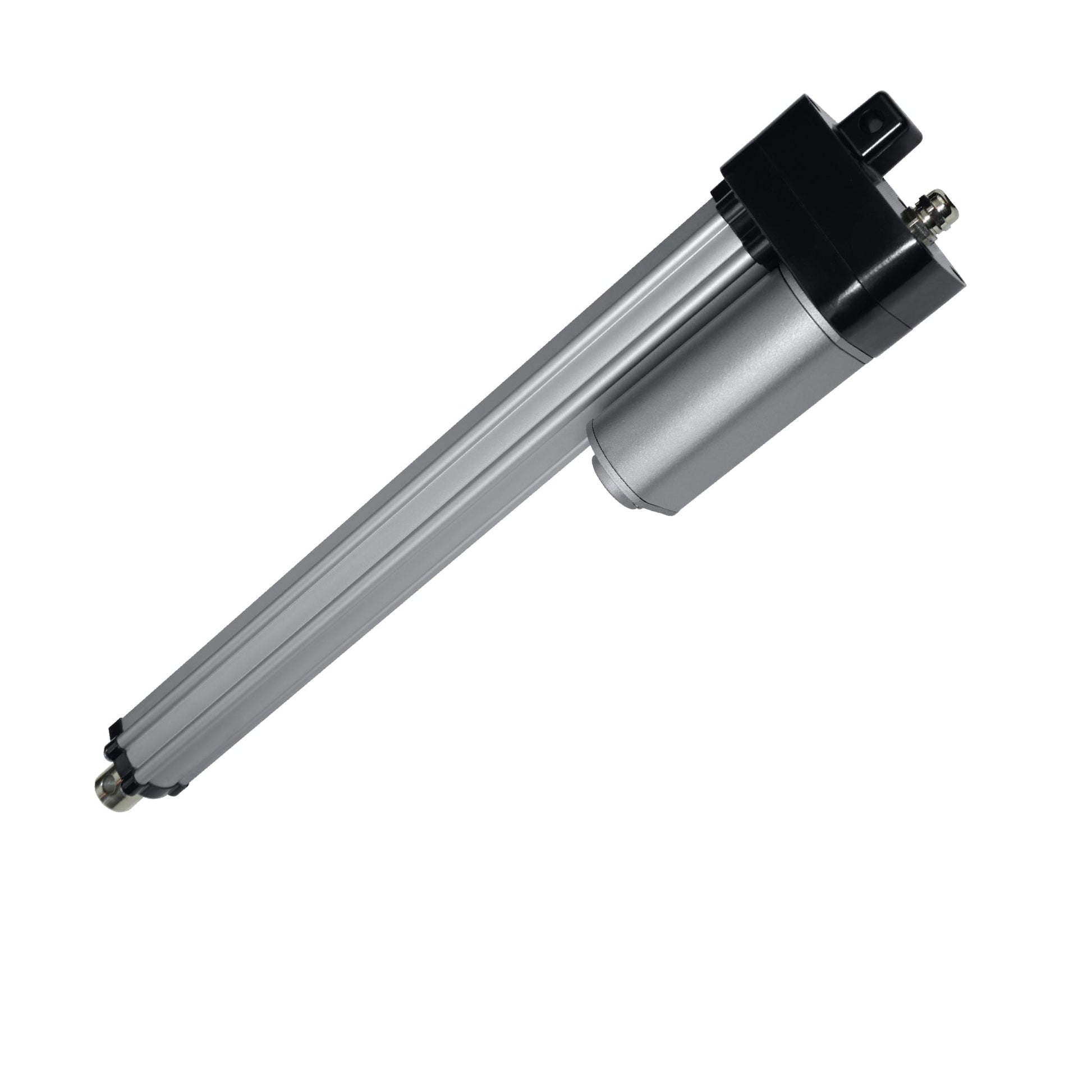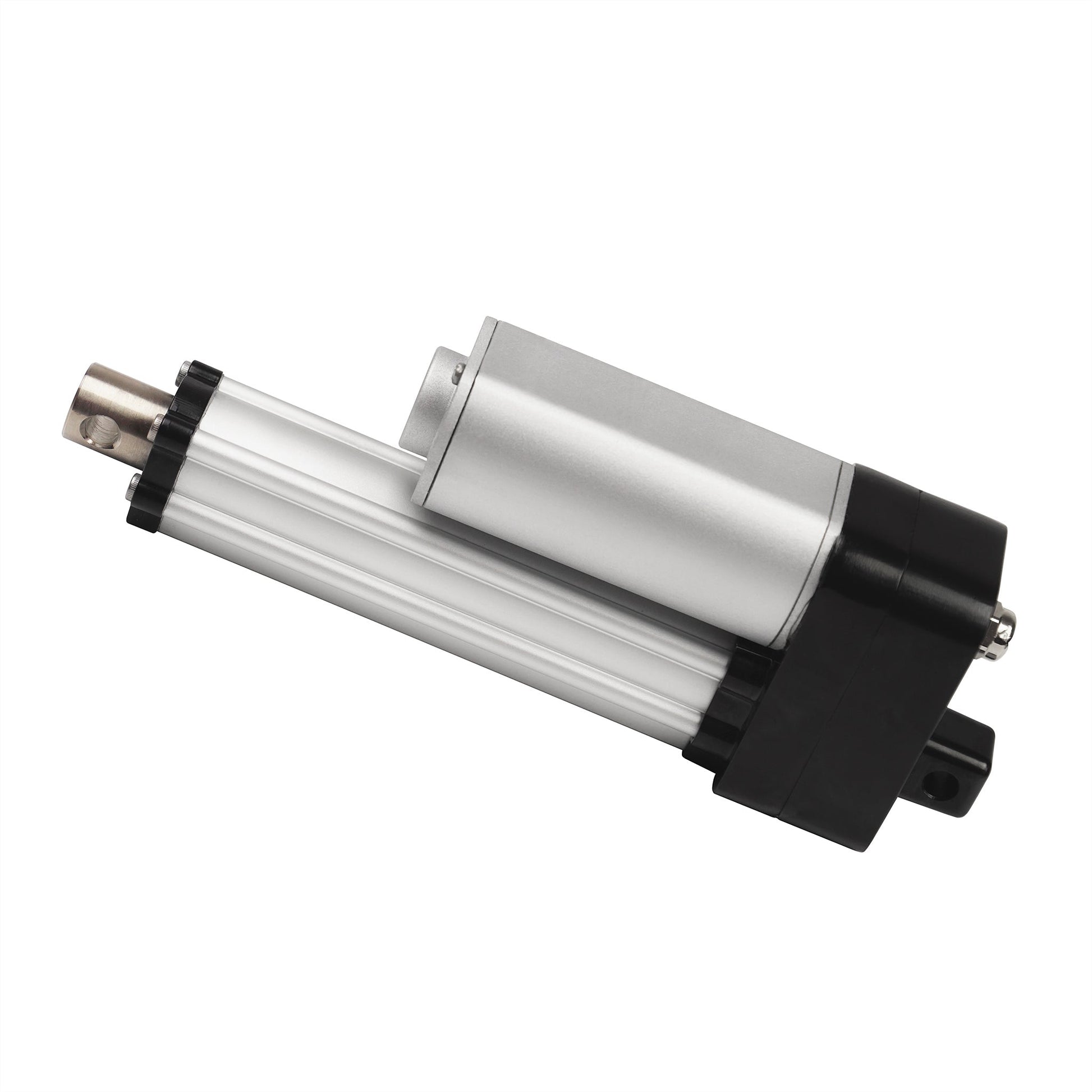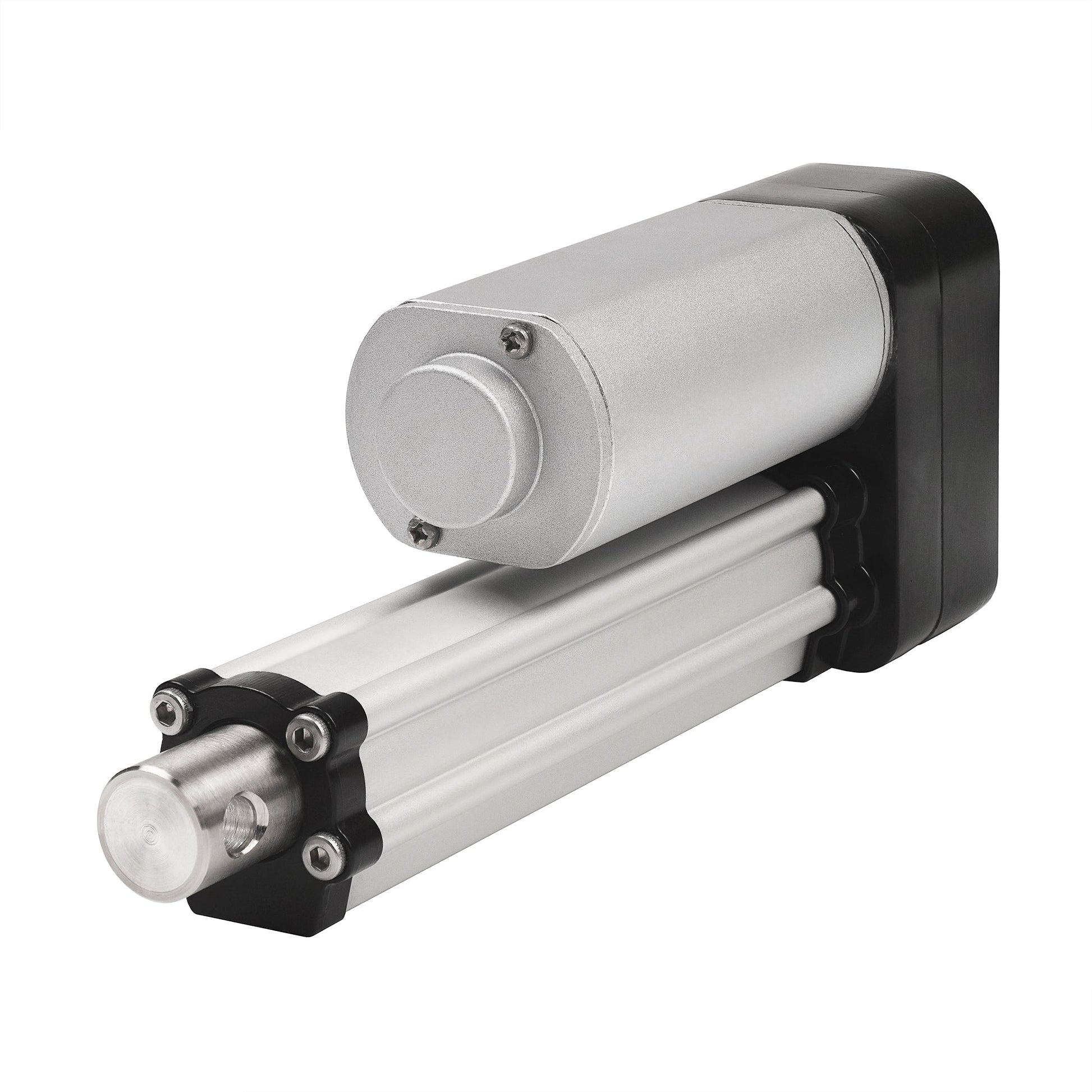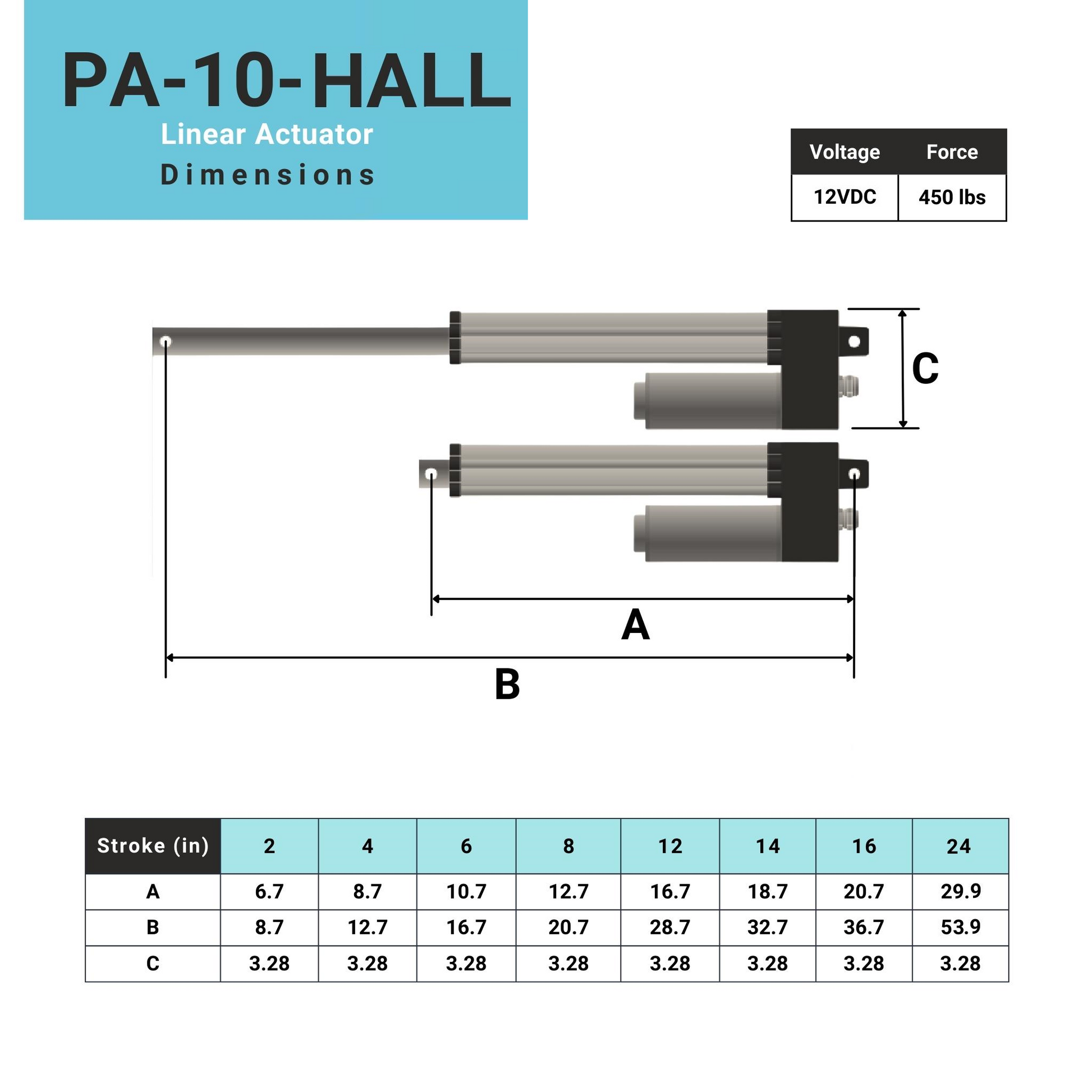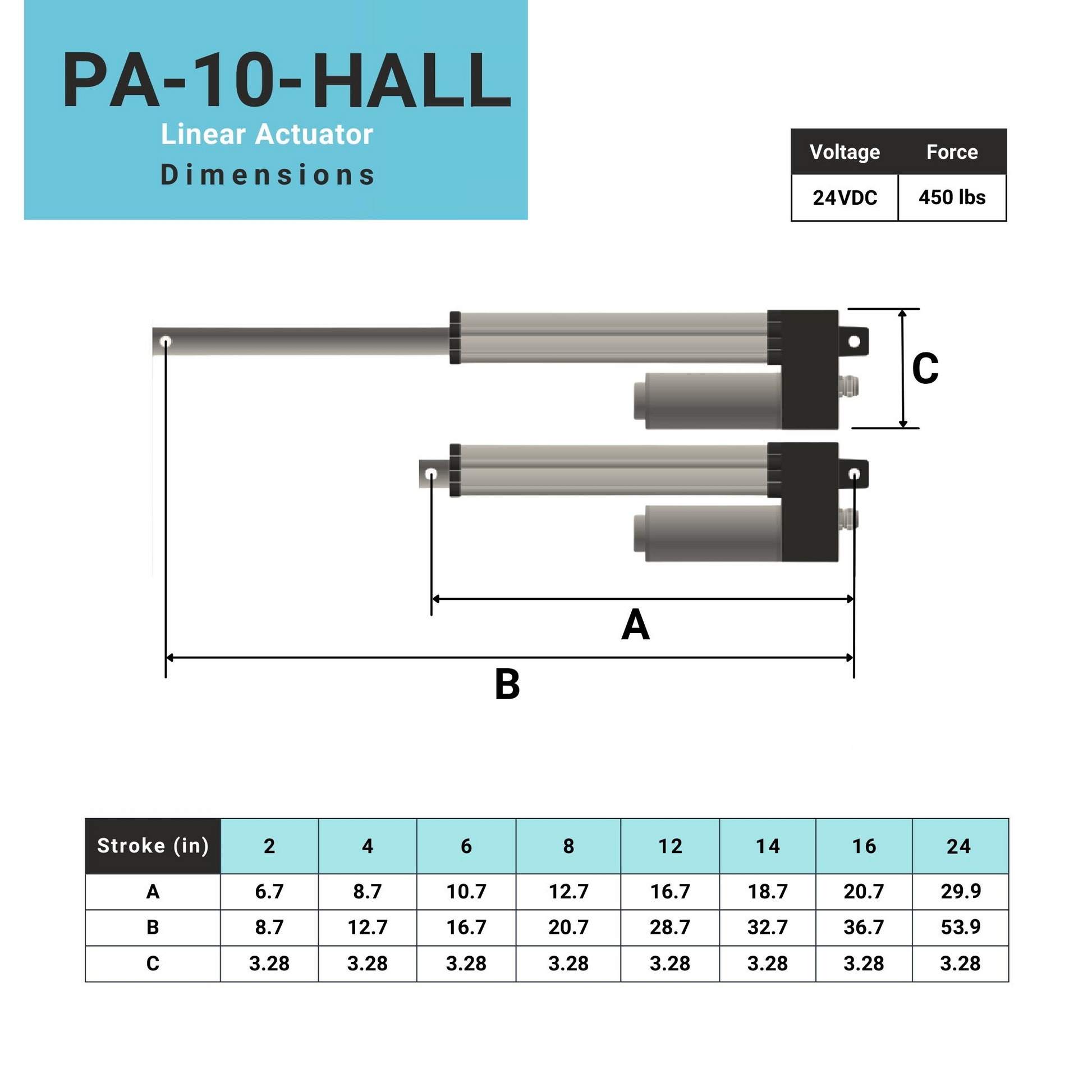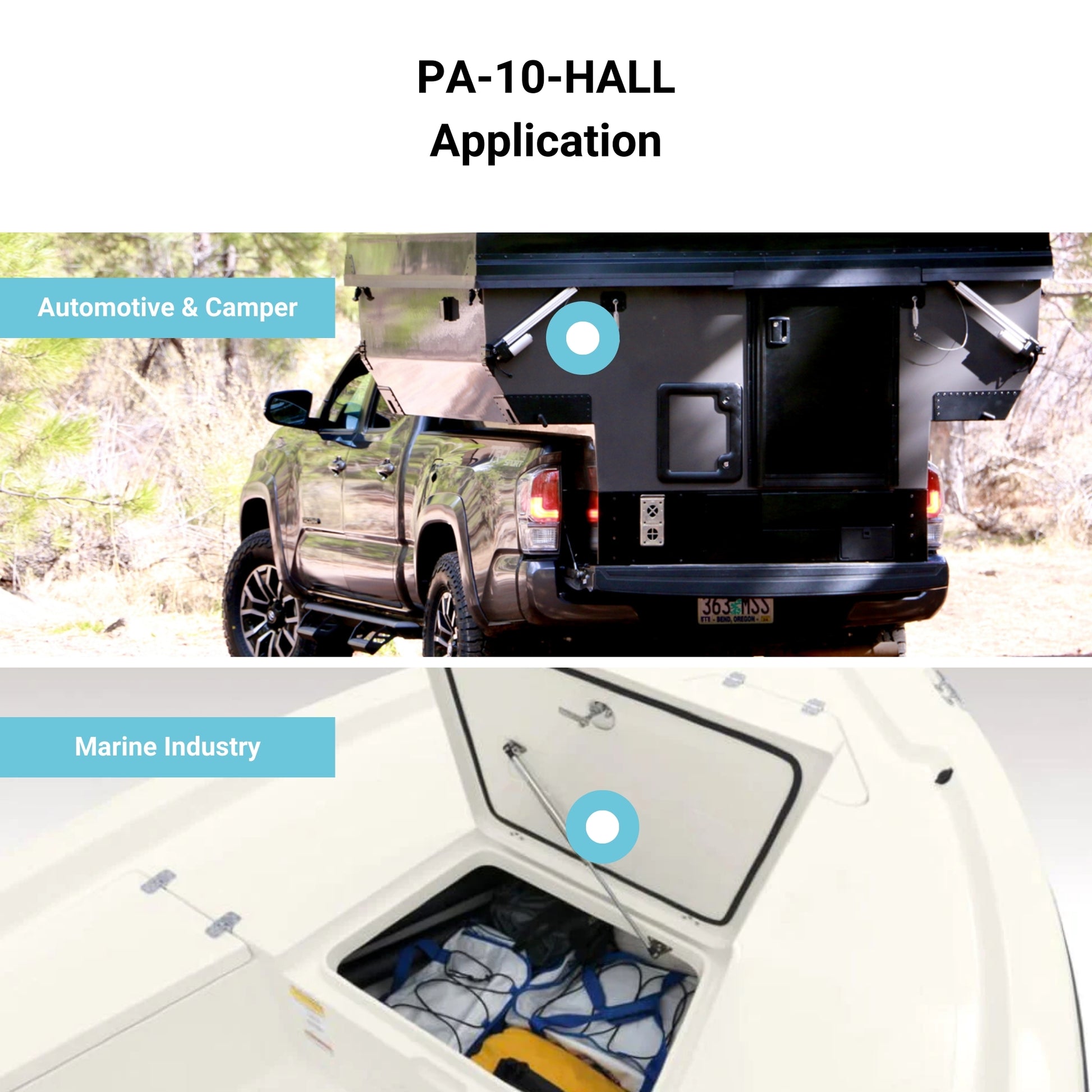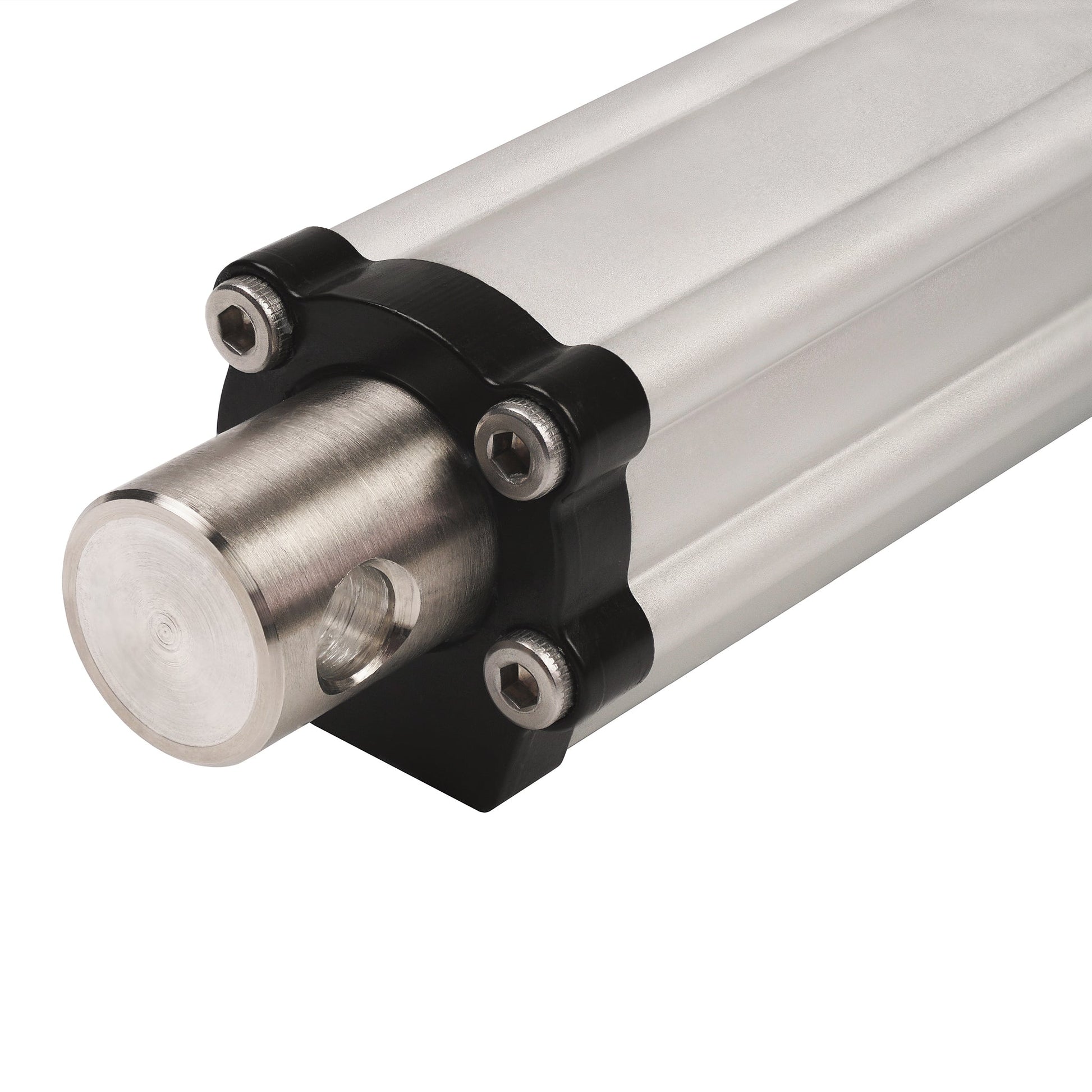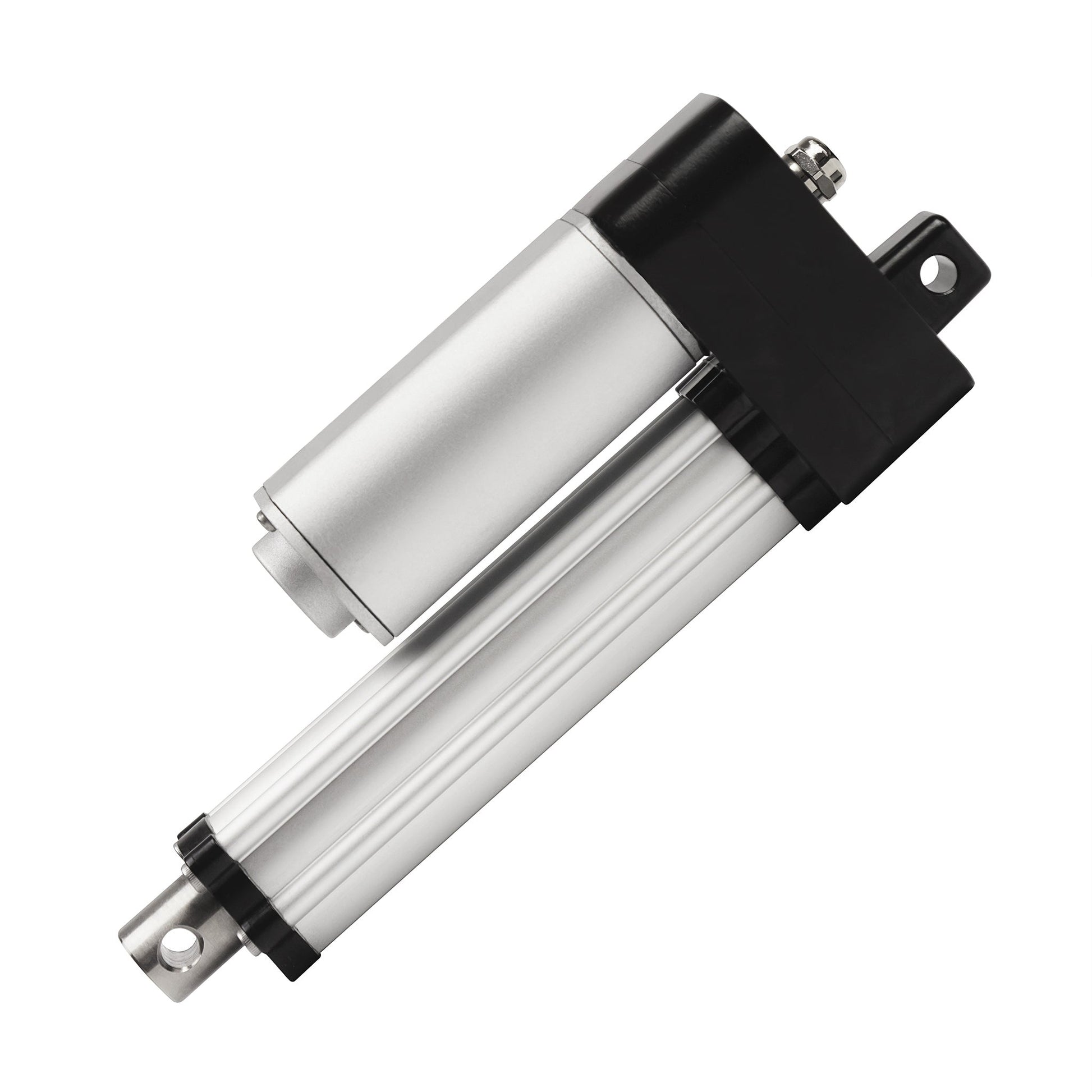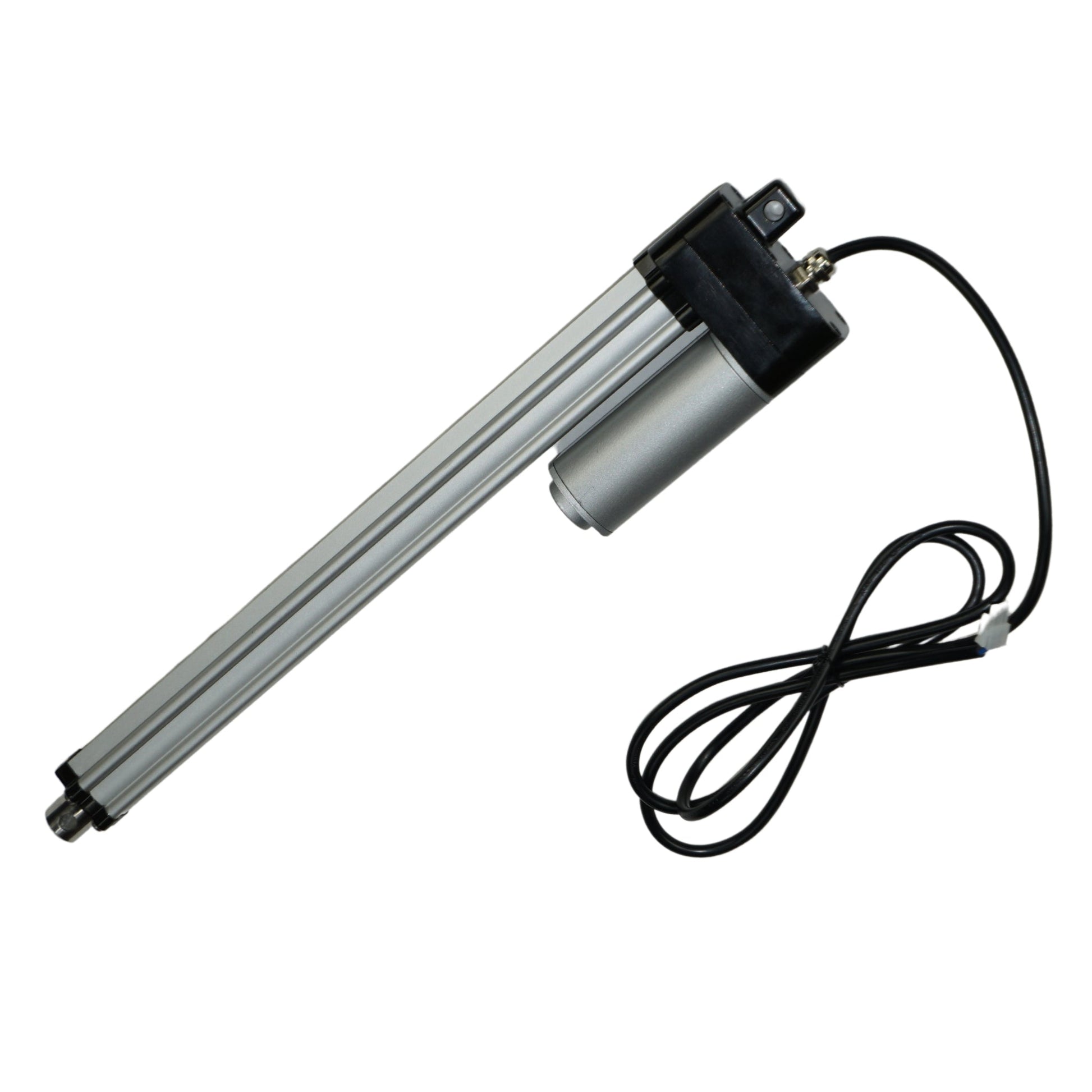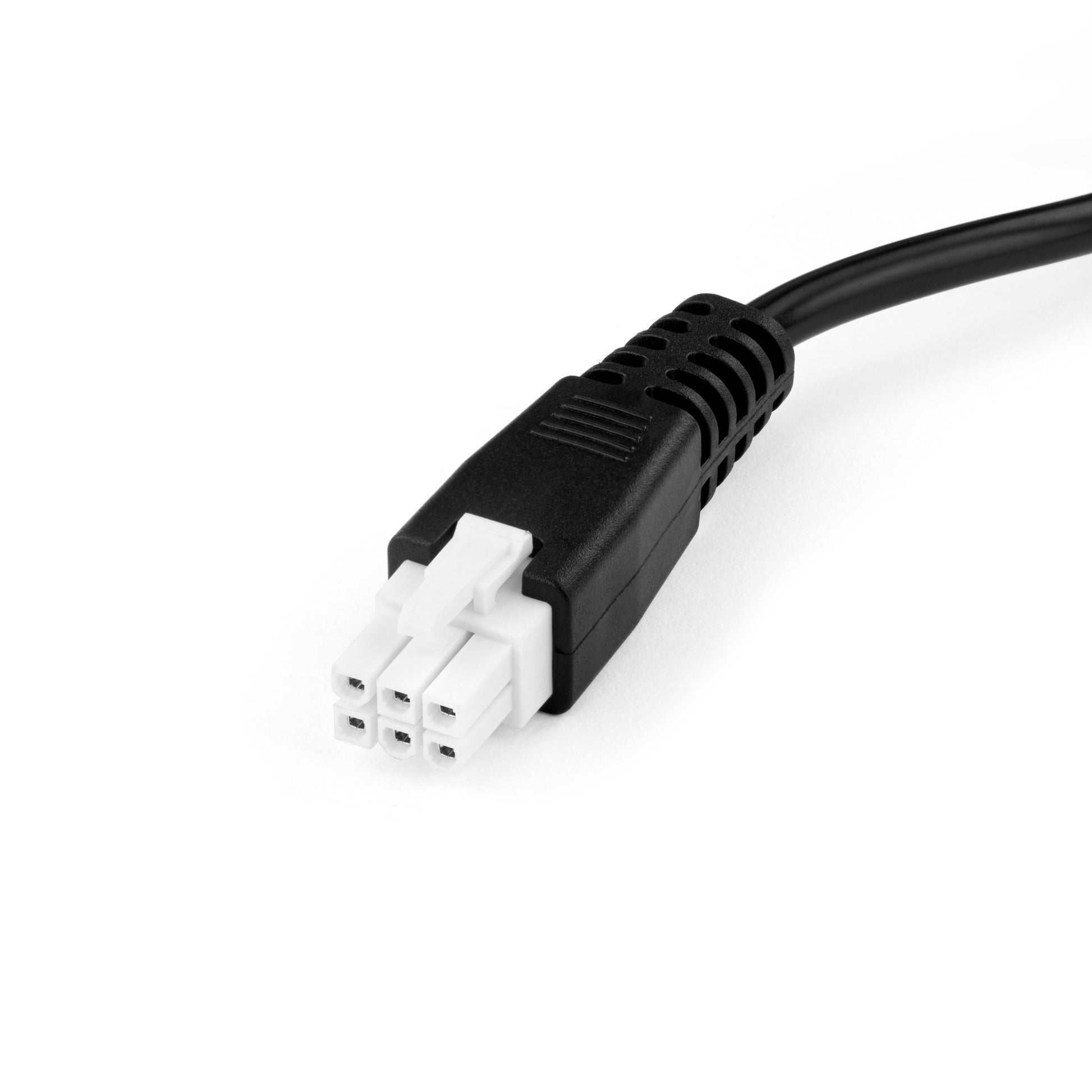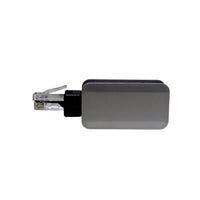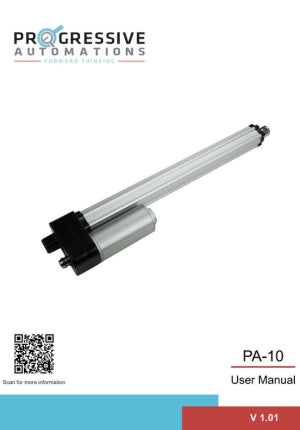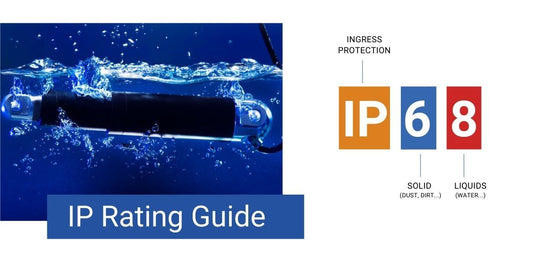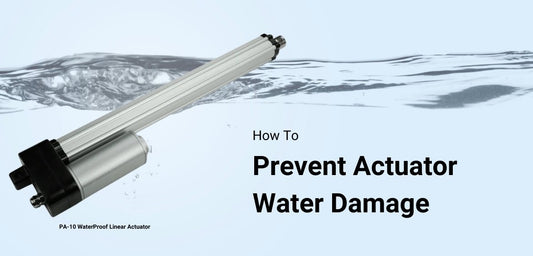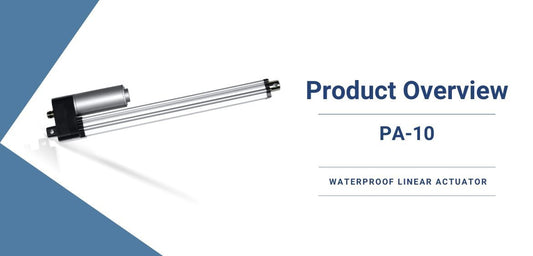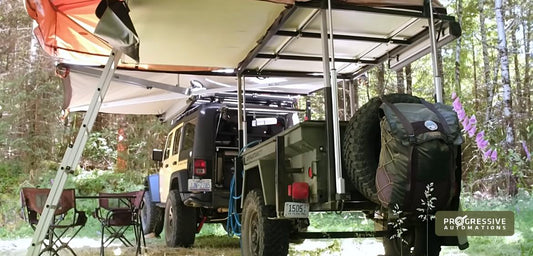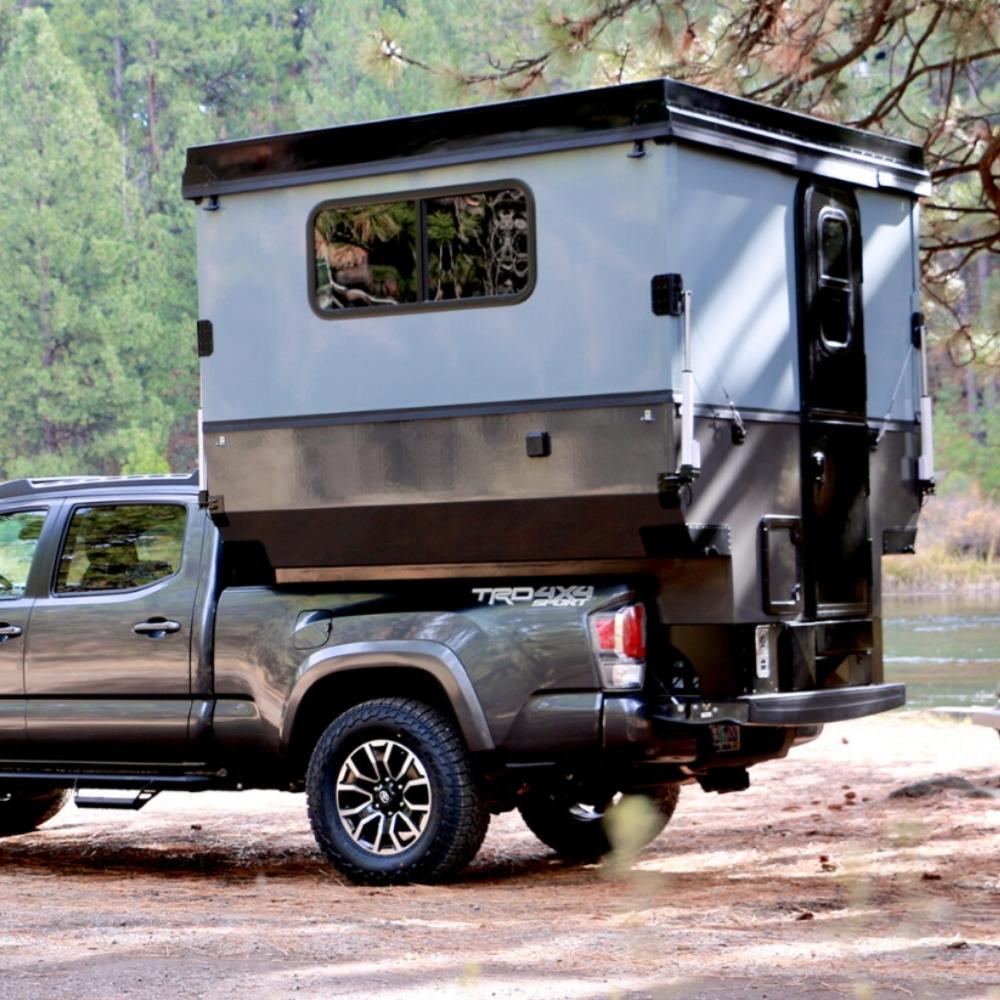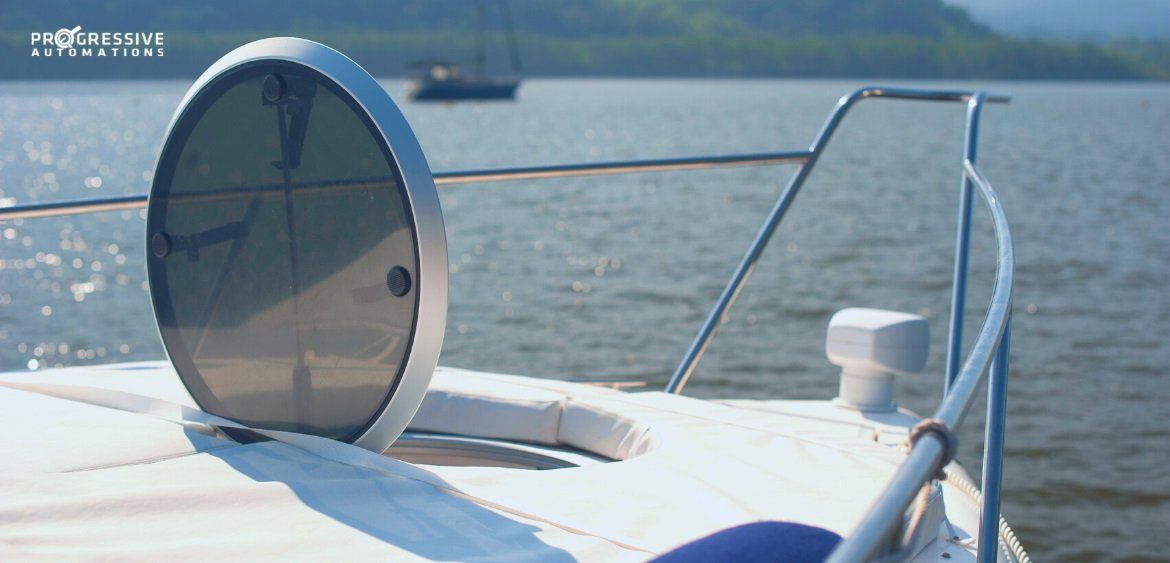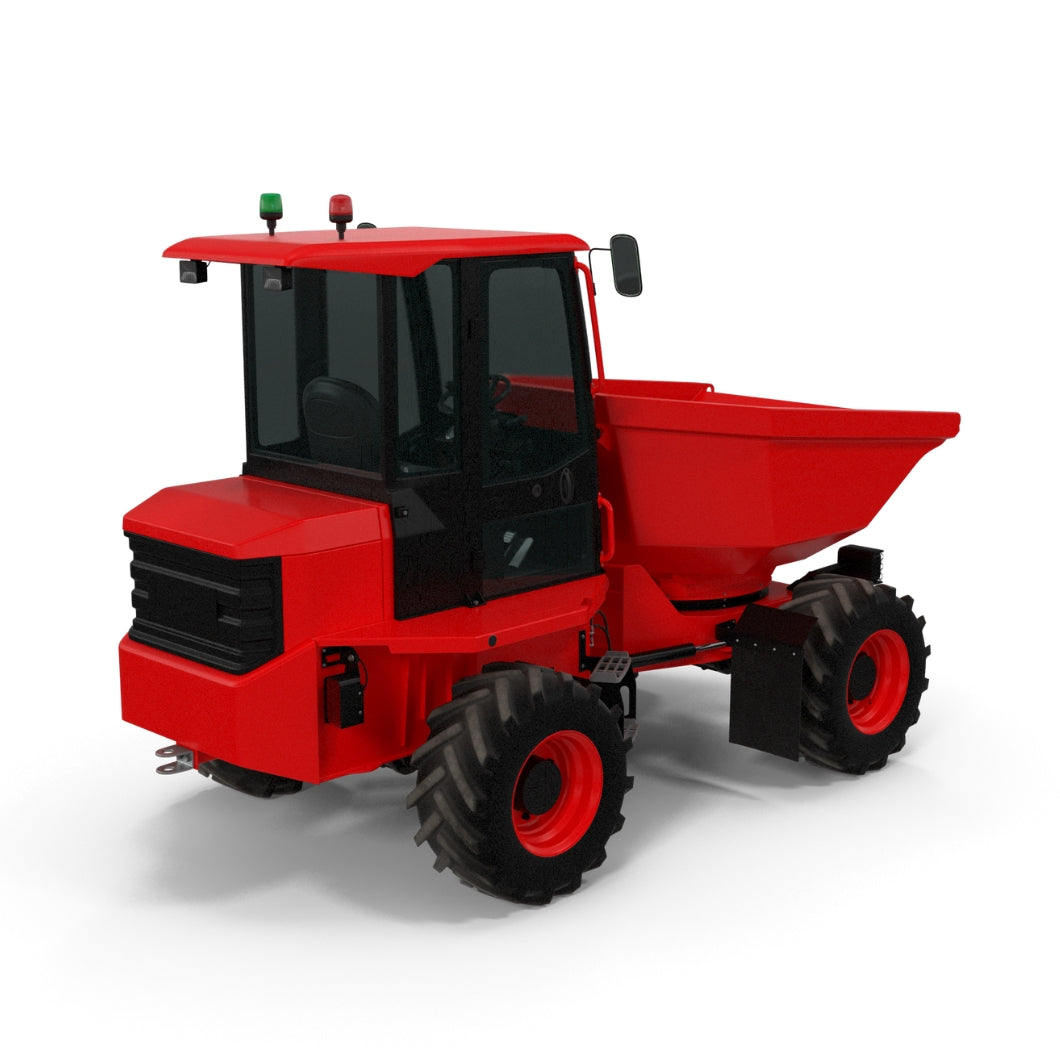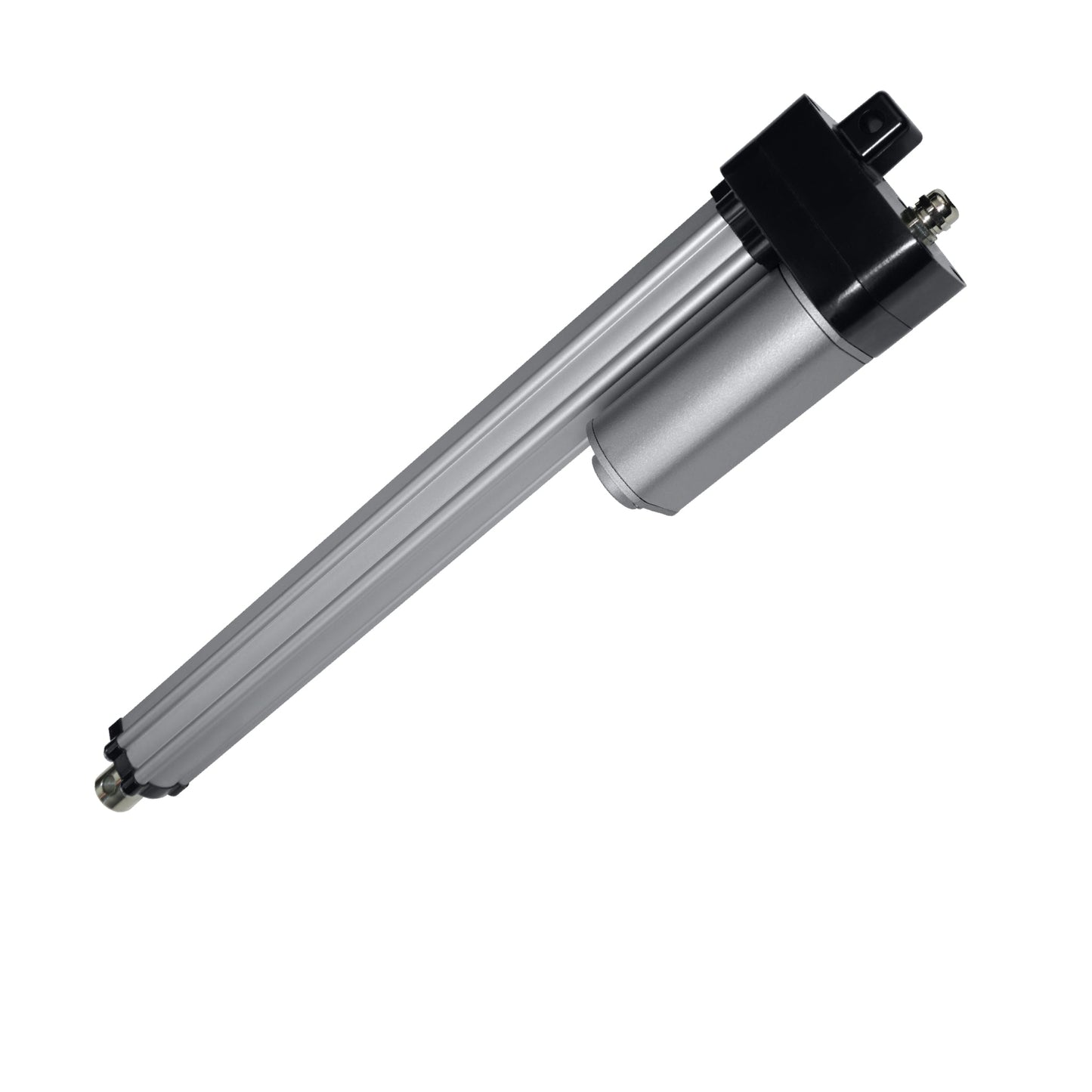
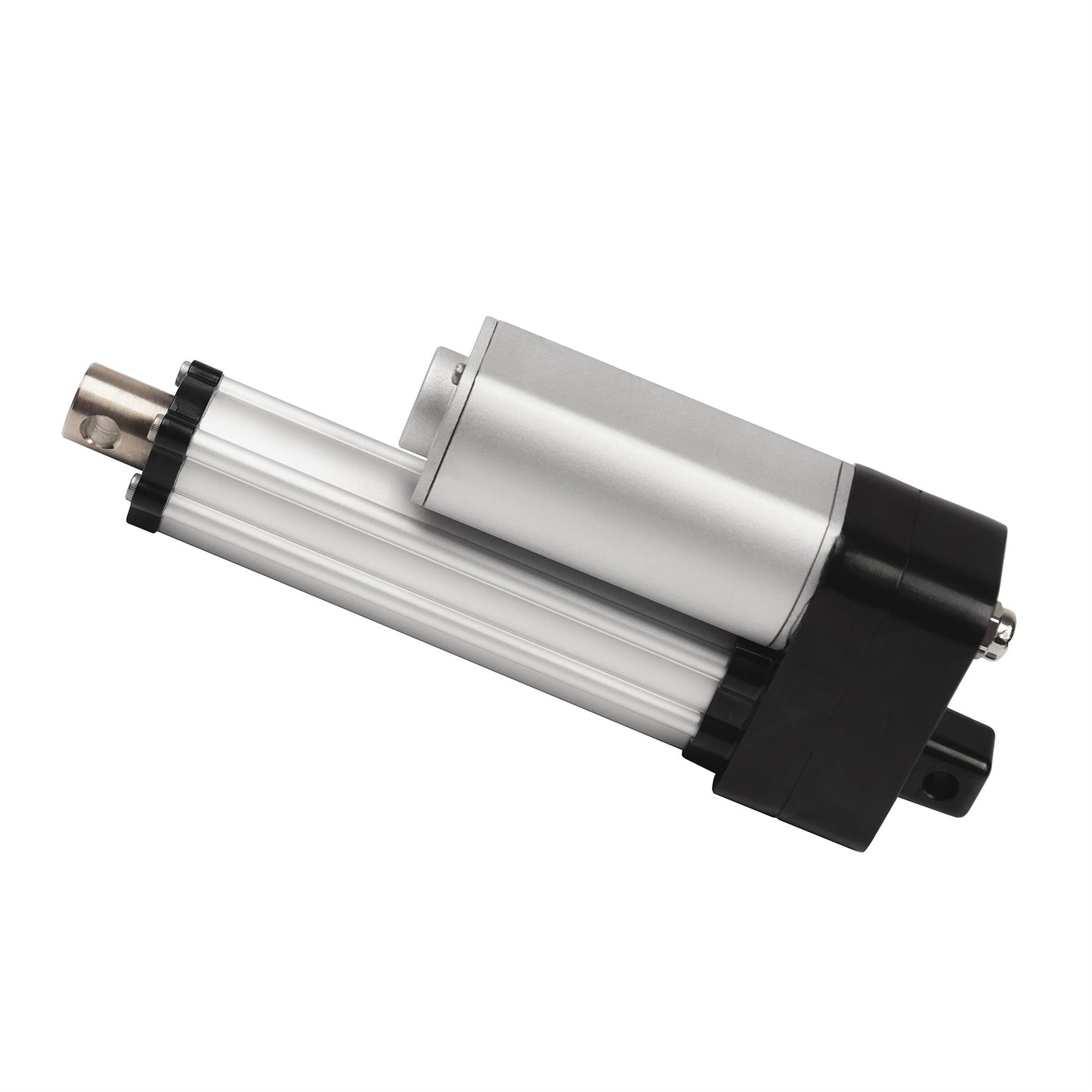
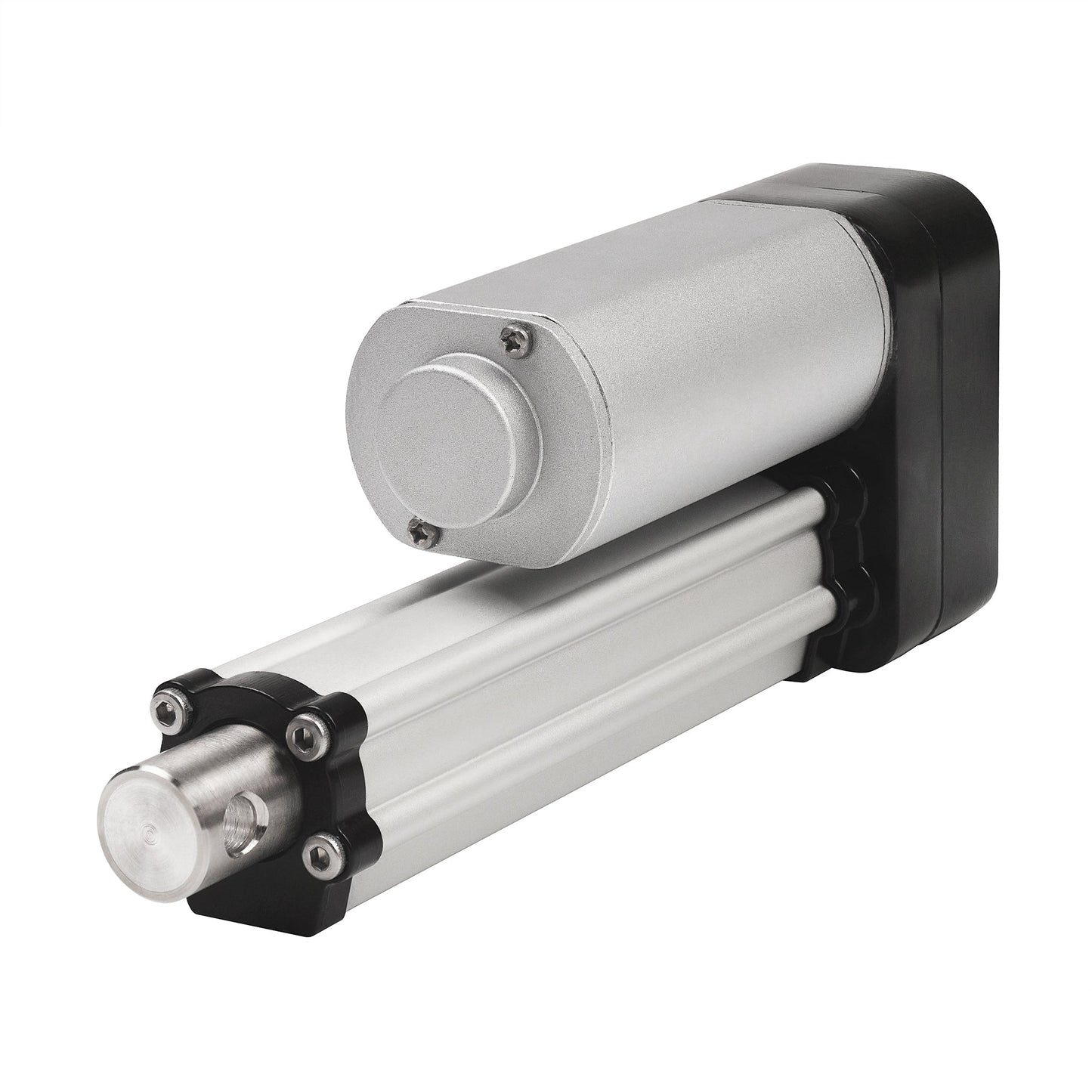
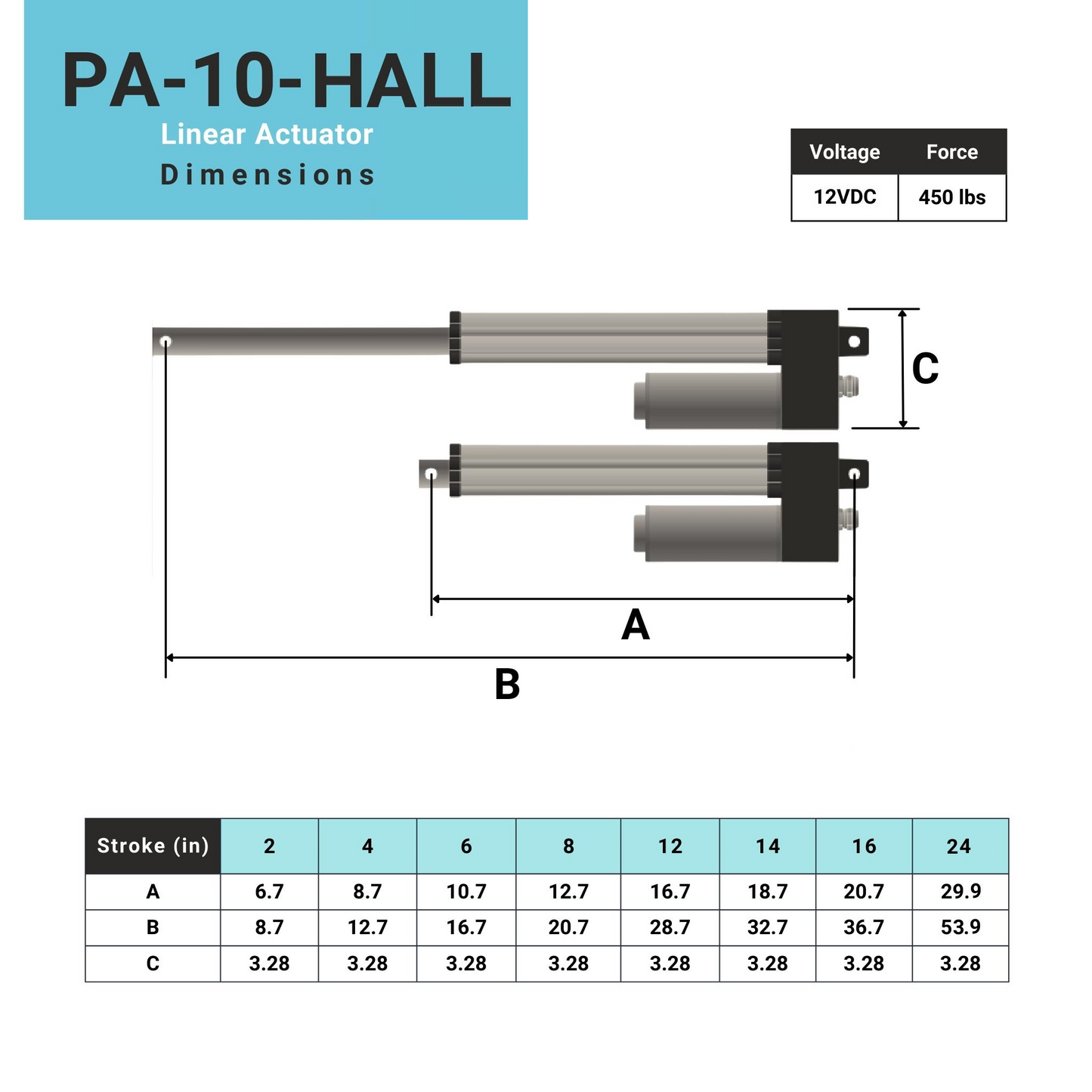
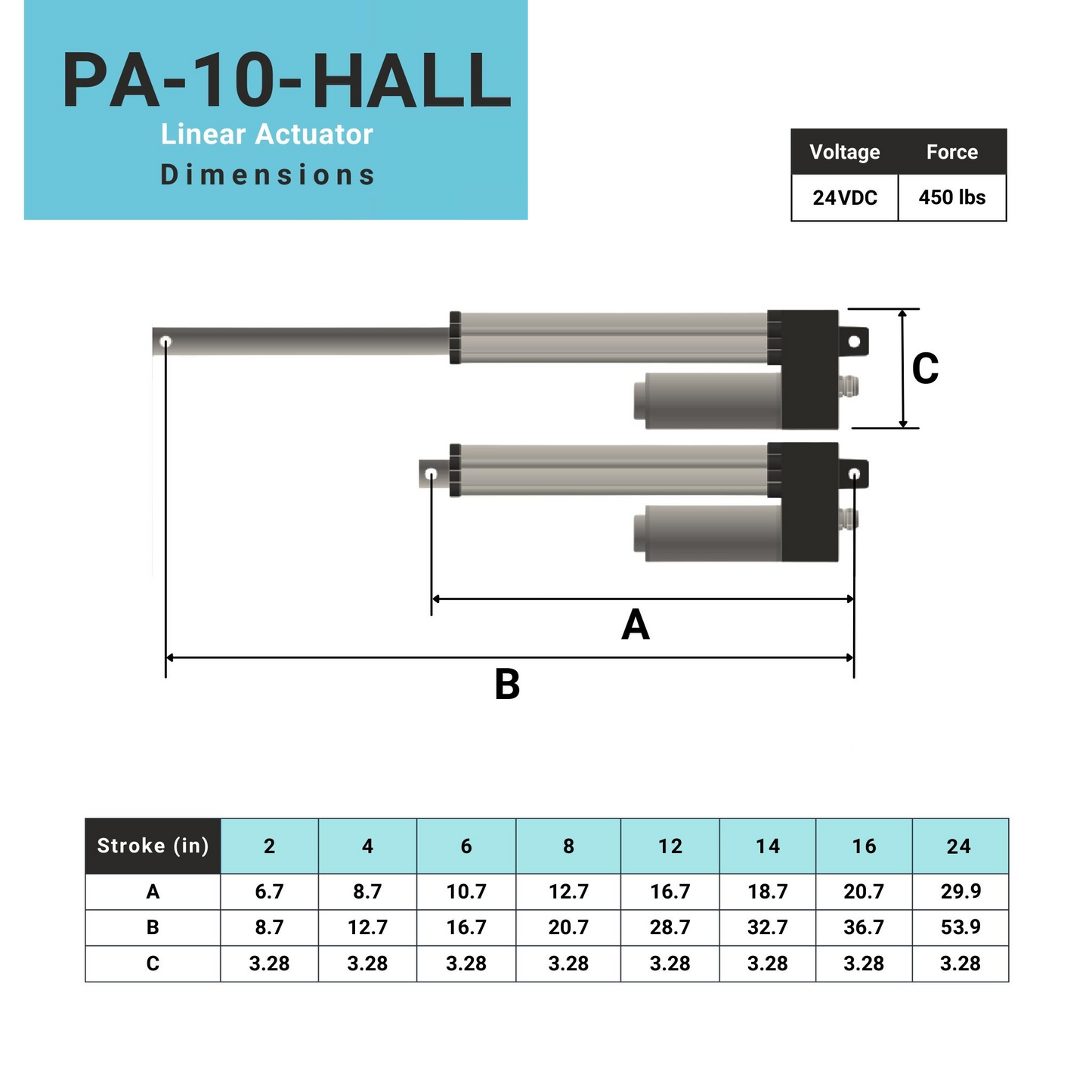
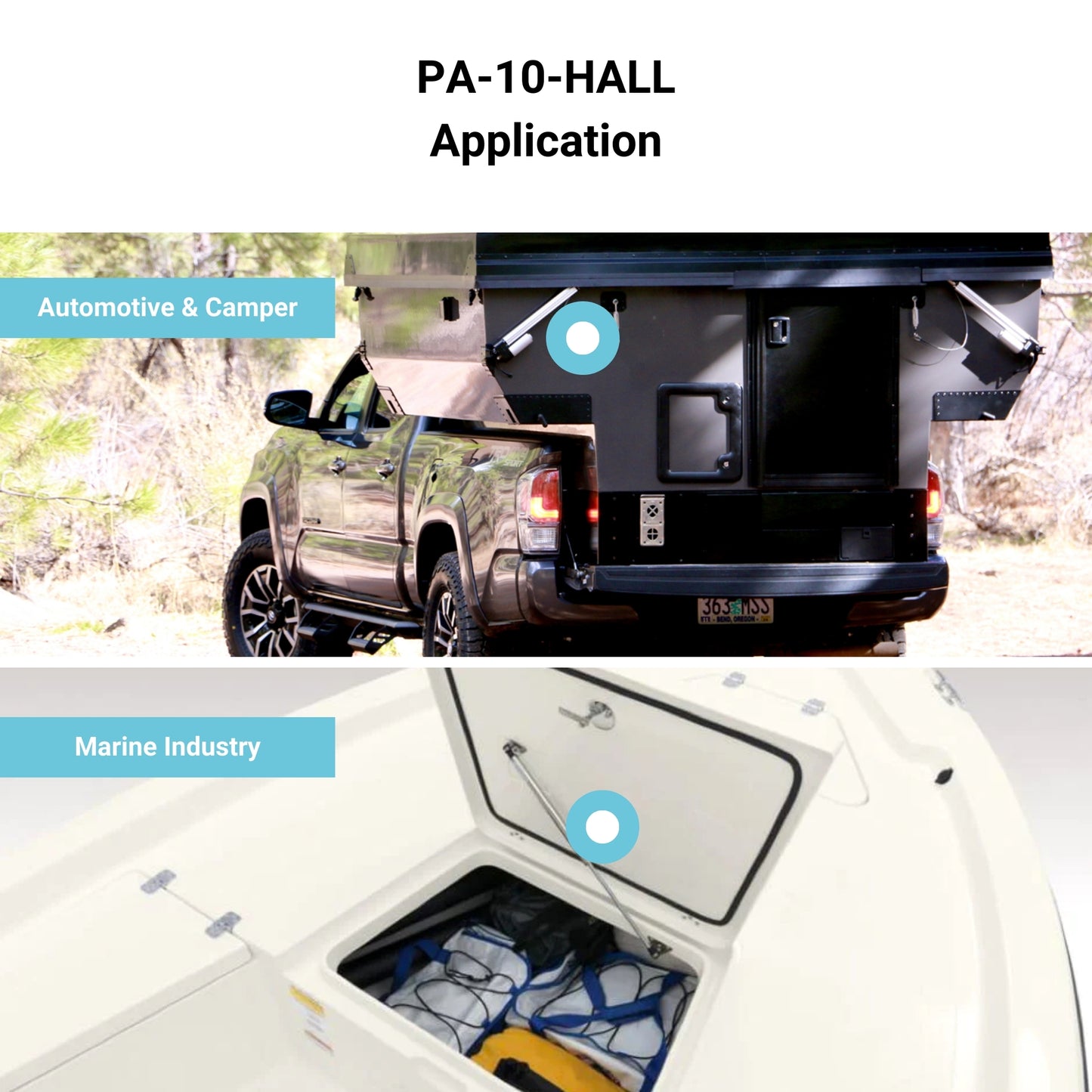
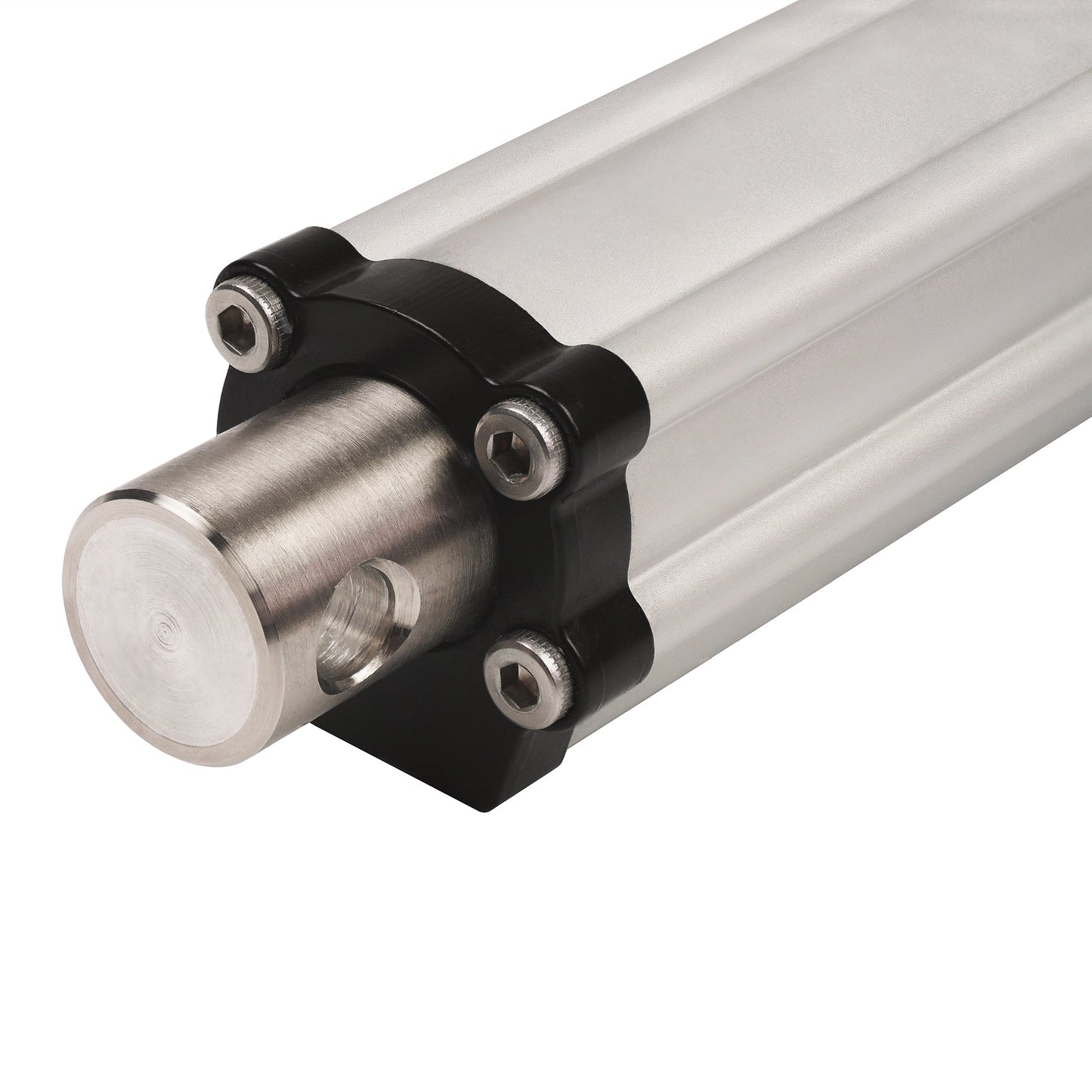
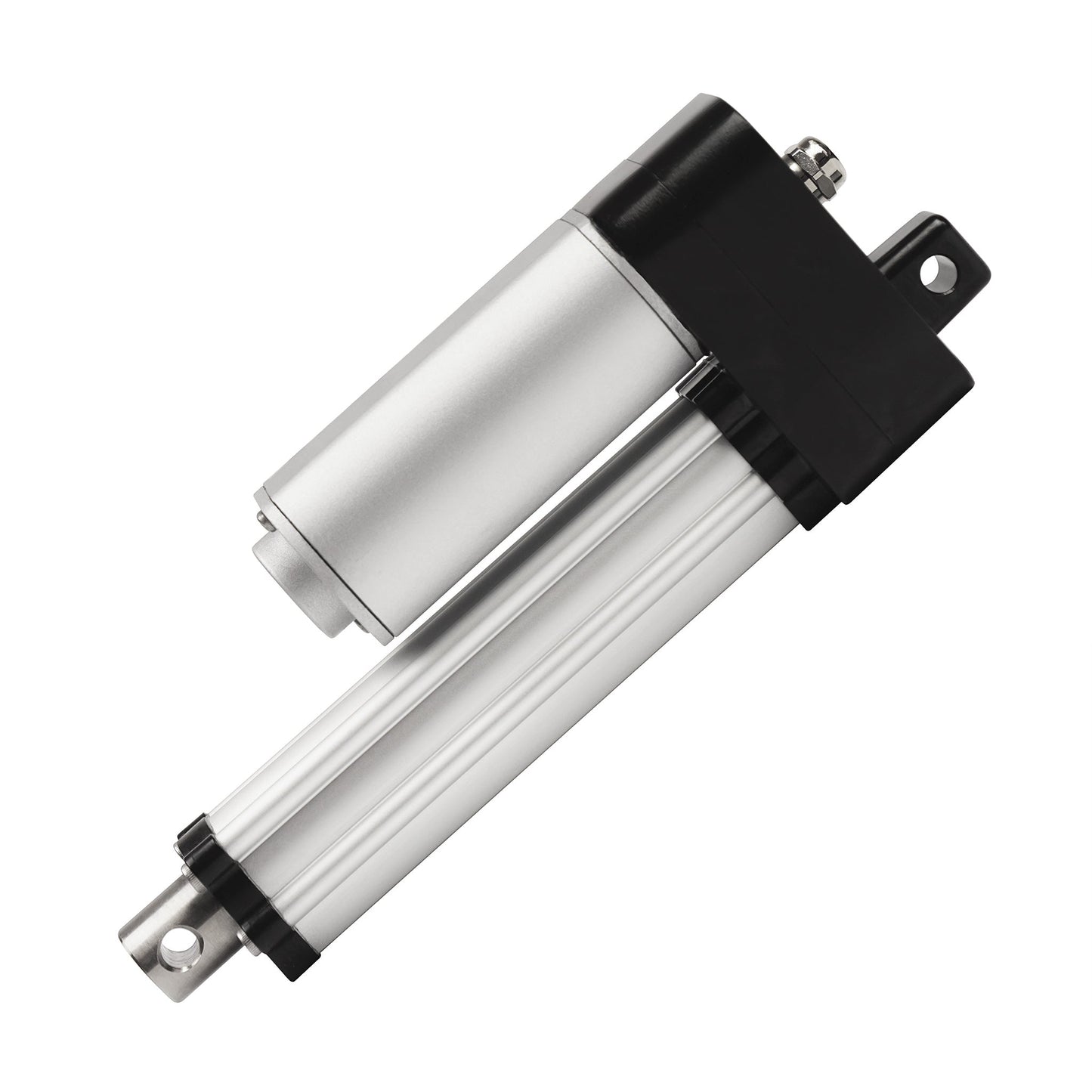
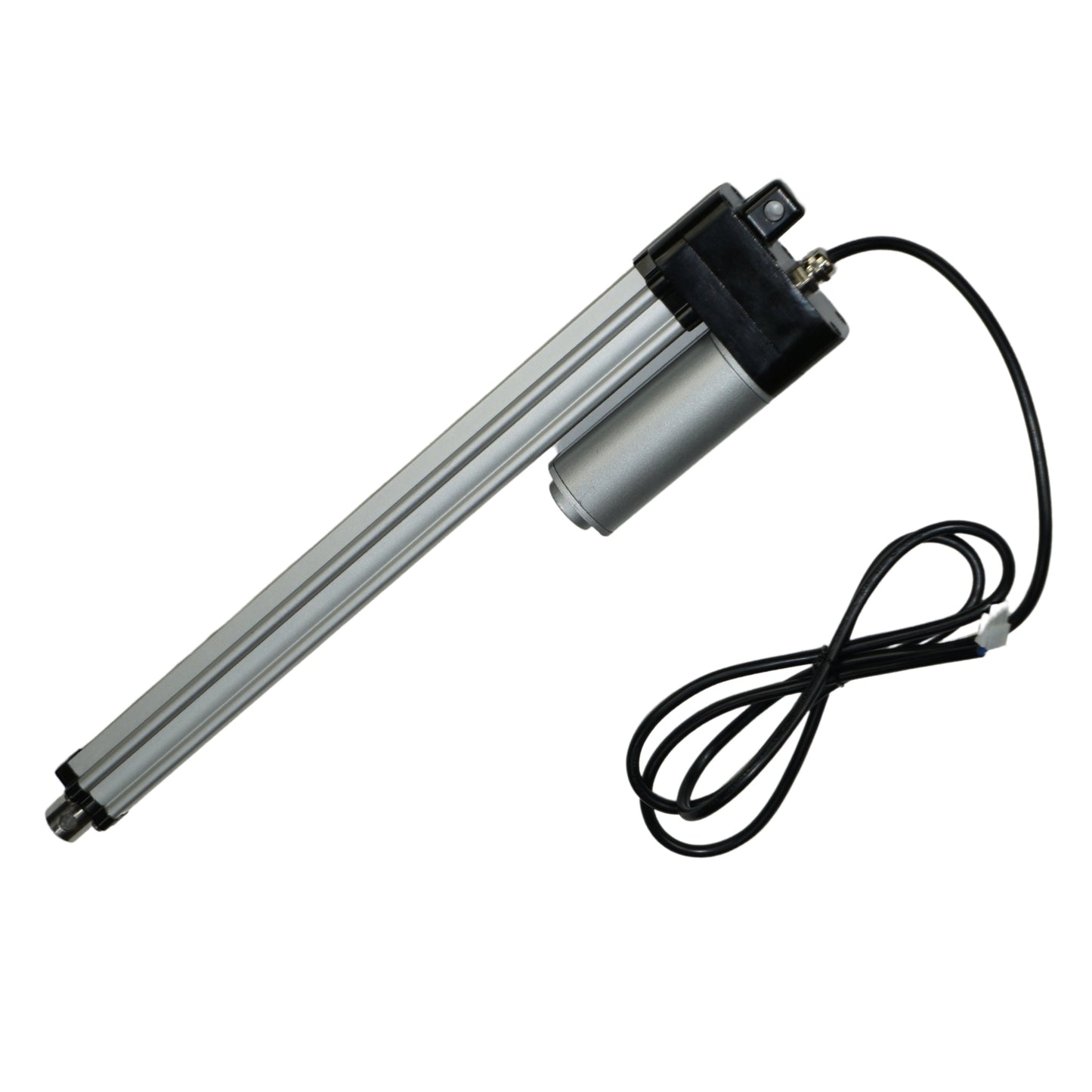
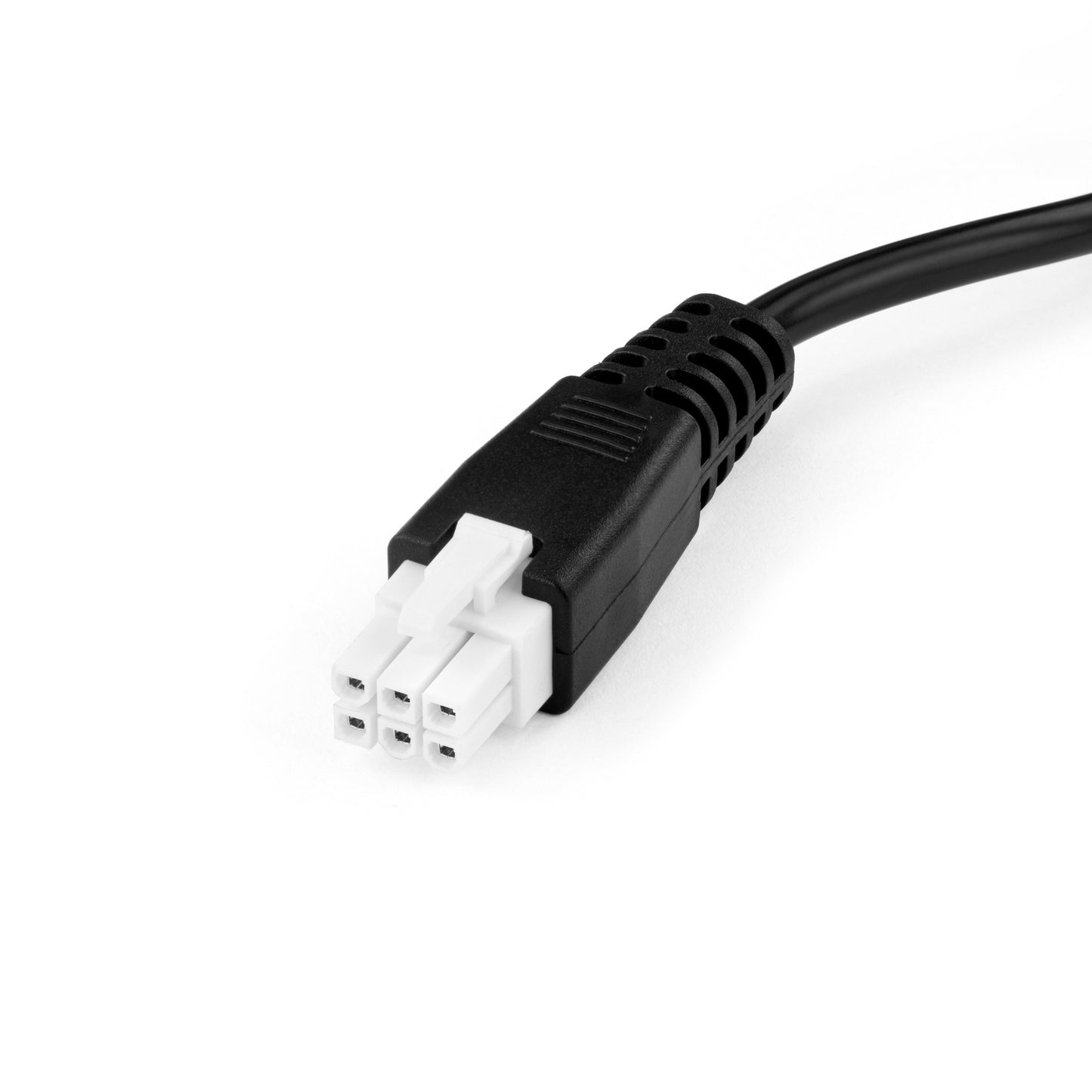
The PA-10-HALL uses built-in proprietary hall effect feedback, which allows for synchronization, speed control, and position control. Hall effect feedback is crucial to applications where multiple actuators must travel in sync. The standard PA-10 like the PA-10-HALL both have a high IP rating of IP66 to withstand harsh outdoor environments. In combination with its compact size and high-force rating, the PA-10-HALL is excellent for marine, automotive, and agricultural applications.
For applications that require added corrosion resistance, the PA-10-HALL can be custom ordered in a Salt Spray rated version which features specialized porcelain plated housing. This has been vigorously tested for up to 400 hours of salt spray exposure, ensuring that it will perform in the harshest environments.
For more information on specifications, dimensional drawings, and customization options, please see the PA-10-HALL datasheet. Please see the IP-Rating Guide for more information on these ratings.
Vergleichstabelle für AktuatorenMOUNTING OPTIONS:
The BRK-09 bracket, compatible with the PA-10-HALL, can be used on either the stroke or motor-end mounting locations and allows for over 180° rotation.
CONTROL SYSTEMS:
The PA-10-HALL is compatible with the wireless PA-40, PA-40-24VDC, and PA-41 hall effect sensor control box as well as the wired FLTCON control box series. For more information about our plug-n-play control boxes and development micro-controllers, please see our control systems page.
*Our PA-10-HALL actuators with 24 V DC motors are compatible with the PA-40, PA-40-24VDC, and PA-41-4-12V24V and FLTCON series of control boxes for multiple actuators that need to move at the same speed synchronously. For more information, please contact sales@progressiveautomations.com to confirm the compatibility of this product with Progressive Automations control boxes.
Benutzerdefinierte Optionen
Sie suchen einen Aktor, aber die Spezifikationen entsprechen nicht exakt Ihren Anforderungen? Wir bieten Ihnen umfangreiche Anpassungsmöglichkeiten, damit Sie genau das bekommen, was Sie für Ihr Projekt benötigen. Laden Sie das Datenblatt dieses Produkts herunter und erfahren Sie mehr über Ihre Anpassungsoptionen!
The PA-10-HALL uses built-in proprietary hall effect feedback, which allows for synchronization, speed control, and position control. Hall effect feedback is crucial to applications where multiple actuators must travel in sync. The standard PA-10 like the PA-10-HALL both have a high IP rating of IP66 to withstand harsh outdoor environments. In combination with its compact size and high-force rating, the PA-10-HALL is excellent for marine, automotive, and agricultural applications.
For applications that require added corrosion resistance, the PA-10-HALL can be custom ordered in a Salt Spray rated version which features specialized porcelain plated housing. This has been vigorously tested for up to 400 hours of salt spray exposure, ensuring that it will perform in the harshest environments.
For more information on specifications, dimensional drawings, and customization options, please see the PA-10-HALL datasheet. Please see the IP-Rating Guide for more information on these ratings.
Vergleichstabelle für AktuatorenMOUNTING OPTIONS:
The BRK-09 bracket, compatible with the PA-10-HALL, can be used on either the stroke or motor-end mounting locations and allows for over 180° rotation.
CONTROL SYSTEMS:
The PA-10-HALL is compatible with the wireless PA-40, PA-40-24VDC, and PA-41 hall effect sensor control box as well as the wired FLTCON control box series. For more information about our plug-n-play control boxes and development micro-controllers, please see our control systems page.
*Our PA-10-HALL actuators with 24 V DC motors are compatible with the PA-40, PA-40-24VDC, and PA-41-4-12V24V and FLTCON series of control boxes for multiple actuators that need to move at the same speed synchronously. For more information, please contact sales@progressiveautomations.com to confirm the compatibility of this product with Progressive Automations control boxes.
Benutzerdefinierte Optionen
Sie suchen einen Aktor, aber die Spezifikationen entsprechen nicht exakt Ihren Anforderungen? Wir bieten Ihnen umfangreiche Anpassungsmöglichkeiten, damit Sie genau das bekommen, was Sie für Ihr Projekt benötigen. Laden Sie das Datenblatt dieses Produkts herunter und erfahren Sie mehr über Ihre Anpassungsoptionen!
Die Einhaltung von Normen ist für Unternehmen unerlässlich, um sicherzustellen, dass ihre Produkte und Dienstleistungen ein Qualitätsniveau erreichen, das die Kundenzufriedenheit fördert. Wir bei Progressive Automations streben stets nach dem Besten für unsere Kunden und verbessern uns kontinuierlich. Daher freuen wir uns, Ihnen mitteilen zu können, dass Progressive Automations nun nach ISO 9001:2015 zertifiziert ist!
Qualität, der Sie vertrauen können – Erfahren Sie mehr2D/3D-Modelle

3D-Modelle
Depending on your application, there are different specification requirements you should consider when determining the linear actuator you need. These requirements include force, stroke, speed and mounting dimensions. For detailed actuator information, you can refer to either the datasheet or the specification table located on the selected actuator's product page. You can also contact us to speak with one of our expert engineers.
TastverhältnisDer Tastgrad gibt den Anteil der Arbeitszeit an, in dem ein Linearantrieb aktiv bleiben kann. Sie können den Tastgrad eines Linearantriebs mithilfe der folgenden Gleichung berechnen:Arbeitszyklus (%) = (Zeit, in der der Linearantrieb aktiv ist) / (Zeit für eine Arbeitsperiode)
Beispiel: Bei einem Arbeitszyklus von 25 % kann ein Aktor 5 Minuten lang ununterbrochen laufen, bevor er 15 Minuten ruhen muss, bevor er wieder in Betrieb genommen werden kann.
SchlaganfallDer Hubweg der Ausfahrstange wird mit bezeichnet. Um die benötigte Hublänge zu ermitteln, messen Sie den Abstand zwischen der vollständig eingefahrenen und der vollständig ausgefahrenen Position. Die Differenz entspricht der benötigten Hublänge.
Wir empfehlen stets, einen Aktor mit einer höheren Nennkraft als für die jeweilige Anwendung erforderlich zu kaufen. Falls Sie sich bezüglich Ihrer Kraftanforderungen unsicher sind, kann Ihnen dieser Artikel bei der Berechnung helfen:Wie man die Kraft berechnet, um den richtigen Linearantrieb zu finden
Ja, das ist möglich. Es hängt jedoch von den verwendeten Geräten ab. Zur Synchronisierung von Aktuatoren ist eine Rückkopplung erforderlich, beispielsweise über ein Potentiometer oder Hall-Sensoren. Weitere Informationen finden Sie in unseren wichtigsten Artikeln zur Synchronisierung von Linearantrieben weiter unten.
DerKontrollkästchenDas von Ihnen gewählte Gerät sollte die erforderliche Spannung und Stromstärke für Ihren Aktor liefern. Falls Sie sich bezüglich der Spezifikationen unsicher sind, wenden Sie sich bitte an uns.Kontaktieren Sie unsDie
Alternativ finden Sie kompatible Steuereinheiten auch auf der Produktseite des von Ihnen ausgewählten Linearantriebs.
Backdriving is when an actuator starts sliding down under load, when it is either overloaded or when the actuator has been damaged. Watch the video.
What Does Dynamic and Static Load Ratings Mean?Dynamic load rating is the amount of weight an actuator can pull or push safely when being powered. Static load rating is the amount of weight the actuator can hold or withstand without back driving when it is not being powered. For example, let's just say you have an actuator installed on a window and the static load rating of the actuator is 100 Pfund, it could experience backdriving when there is a high wind event, which means there will be more pressure exerted on the actuator which would exceed the 100 Pfund load rating of the actuator.
What Is Lateral Loading?Lateral loading is when the actuator experiences forces from the lateral plane. Actuators are not meant to handle lateral forces at all so if it experiences any lateral forces, it will likely damage the actuator or bend the rod. So it's advised never to use lateral forces and always make sure the actuator is fully in line or in sync with your application, so it does not take any load other than the axial load. Watch the video.
